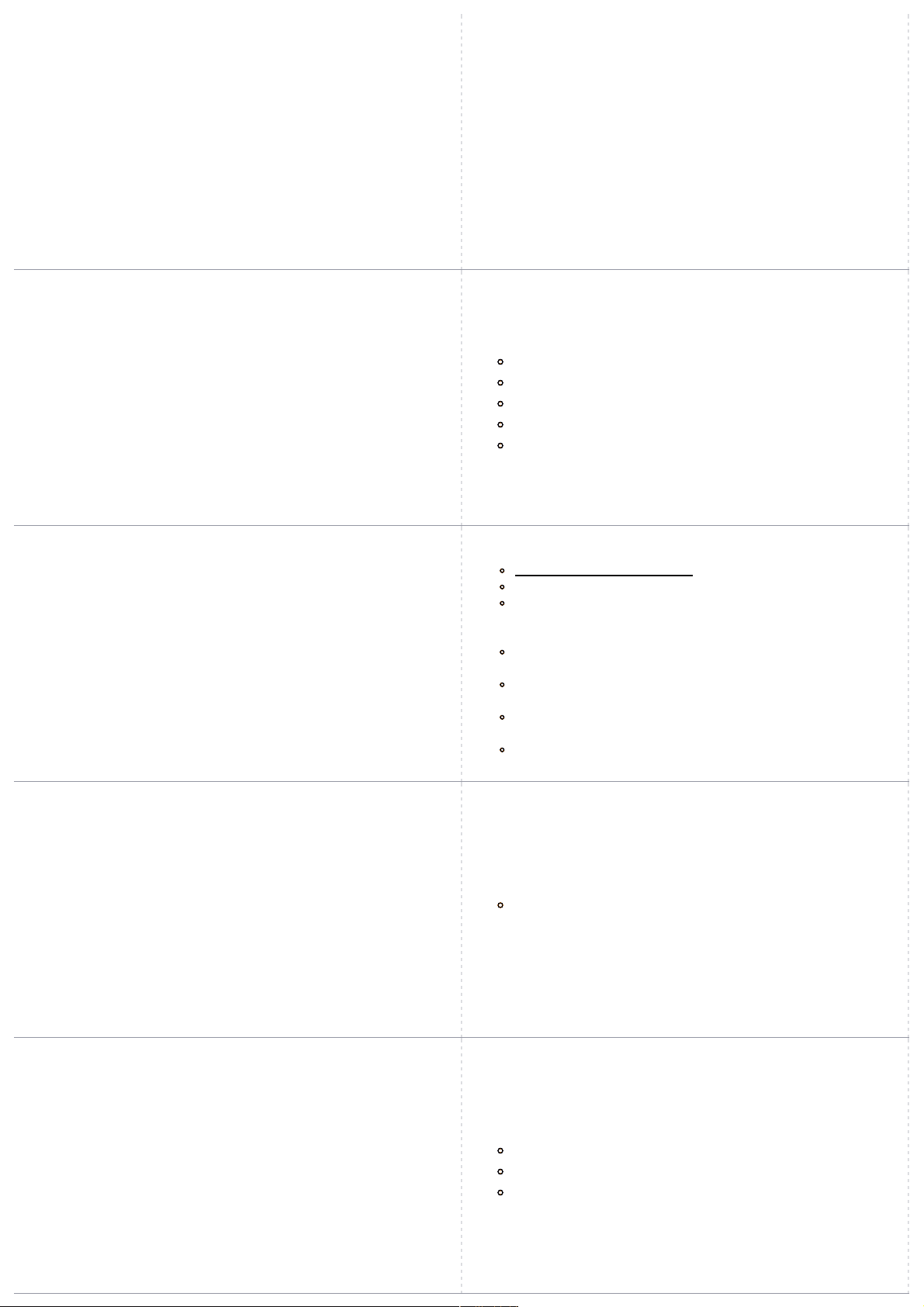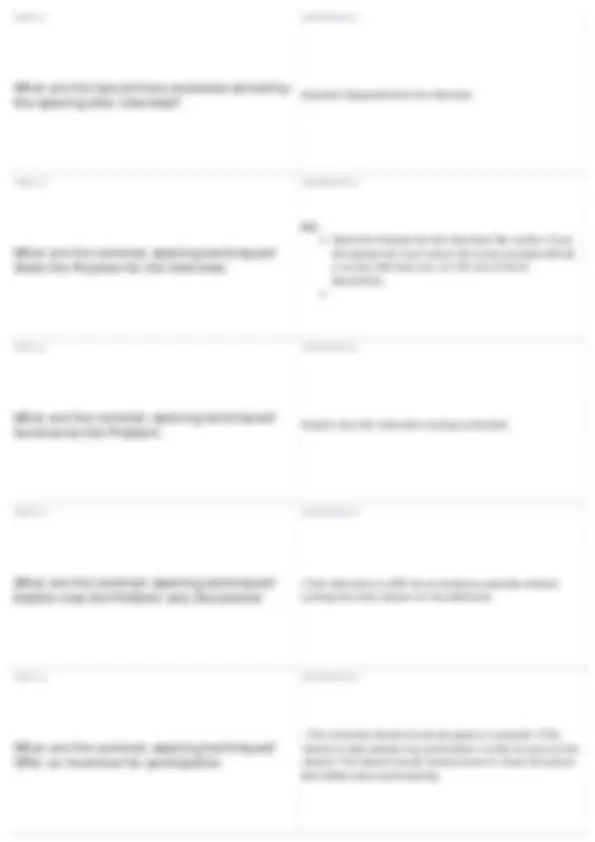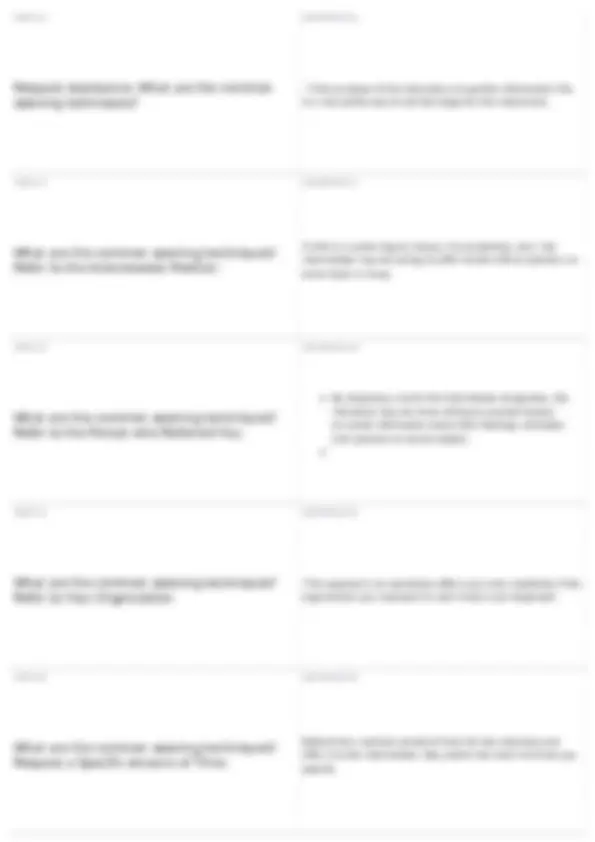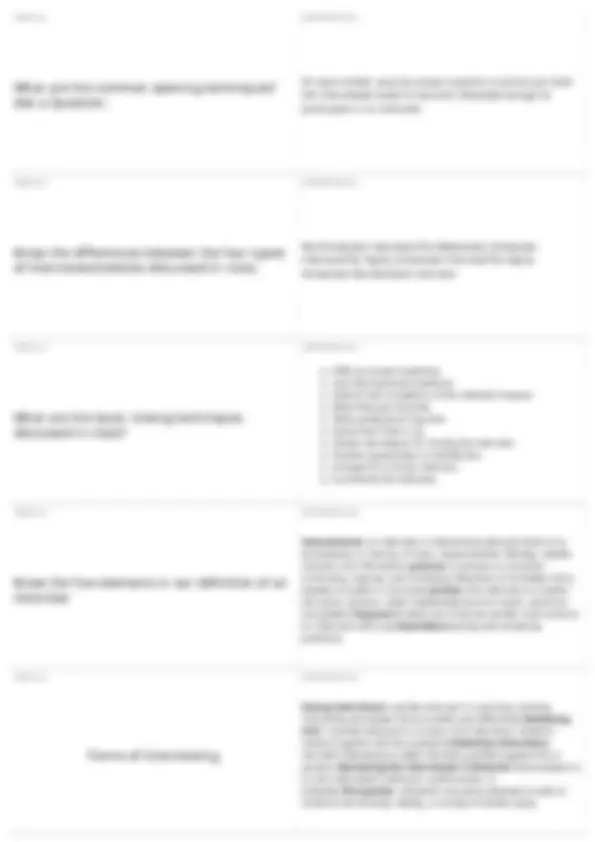





Study with the several resources on Docsity

Earn points by helping other students or get them with a premium plan


Prepare for your exams
Study with the several resources on Docsity

Earn points to download
Earn points by helping other students or get them with a premium plan
Community
Ask the community for help and clear up your study doubts
Discover the best universities in your country according to Docsity users
Free resources
Download our free guides on studying techniques, anxiety management strategies, and thesis advice from Docsity tutors
An in-depth exploration of interviewing techniques and criticisms. It covers the relational dimensions of interviewing situations, communication interactions, definitions of questions and their characteristics, and common question pitfalls. Additionally, it discusses the purposes and opening techniques of interviews, as well as the differences between various types of interviews. This information is essential for students studying communication, psychology, or related fields.
Typology: Quizzes
1 / 6

This page cannot be seen from the preview
Don't miss anything!




TERM 2
DEFINITION 2
TERM 3
DEFINITION 3 Communication Interaction Interaction Levels: Level 1, 2, and 3 Verbal Interaction: Multiple meanings, ambiguity, sound-alike words, connotations, jargon, slang, naming, ordering words, power words. NonVerbal Interaction: General behaviors, Physical appearance and dress Level 1 interactions: relatively safe, nonthreatening, exchanges about such topics as hometowns, professions, college courses Level 2: deal with personal, controversial, or threatening topics, and probe intro values, beliefs positions. Level 3 deal with more personal areas. involve full disclosure. TERM 4
DEFINITION 4
TERM 5
DEFINITION 5
Open or Closed OPEN: These are broad and they allow the respondent considerable freedom in determining the amount and type of information to provide. "Tell me about yourself" (Highly open) "Tell me about your family" (Moderately open) CLOSED: Are restrictive in nature and may supply answer options. "What Communication courses did you take at CMU" (Moderately closed) "What is your age?" __ Under 20, __ 21-40, __ 41-60, __ 61 and over (Highly closed) ***bipolar closed questions TERM 7
DEFINITION 7
TERM 8
DEFINITION 8 Neutral or Leading Neutral Questions - No pressure to respond in a particular fashion. Leading Questions - The interviewer leads the respondent toward one particular answer by making it "easier or more tempting to give one response over another." Loaded Question - Strongly biased in one direction. TERM 9
DEFINITION 9 Silent Probes: nonverbal (nodding) Nudging Probes: please continue... go on (verbal) Clearinghouse Probes: any additional answer... not certain of an answer Informational Probes: follow up questions Restatement Probes: Reflective Probes: you went to harvard! Mirror Probes TERM 10
DEFINITION 10
TERM 17
DEFINITION 17
TERM 18
DEFINITION 18
TERM 19
DEFINITION 19
TERM 20
DEFINITION 20
TERM 22
DEFINITION 22
TERM 23
DEFINITION 23 Offer to Answer Questions Use Clearinghouse Questions Declare the Completion of the Intended Purpose Make Personal Inquiries Make professional Inquiries Signal that Time is Up Explain the Reason for Ending the Interview Express Appreciation or Satisfaction Arrange for a Future Interview Summarize the Interview TERM 24
DEFINITION 24 Interactional : an interview is interactional because there is an exchanging, or sharing, of roles, responsibilities, feelings, beliefs, motives, and information. process: a process is a dynamic, continuing, ongoing, ever-changing interaction of variables with a degree of system or structure. parties: the interview is a dyadic- two party- process. (sales representative and a buyer, physician and patient. Purpose: At least one of the two parties must come to an interview with a goal Questions: asking and answering questions TERM 25
DEFINITION 25 Giving interviews: 2 parties take part in coaching, training, instructing (exchange info accurately and effectively) Gathering info : 2 parties take part in surveys, exit interviews, research sessions.(gather info thro questions) Selective interviews: recruiter attempting to select the best qualified applicant for a position. Reviewing the interviewer's behavior: the emphasis is on the interviewer's behavior, performance, or attitudes. Persuasion: whenever one party attempts to alter or reinforce the thinking, feeling, or acting of another party.